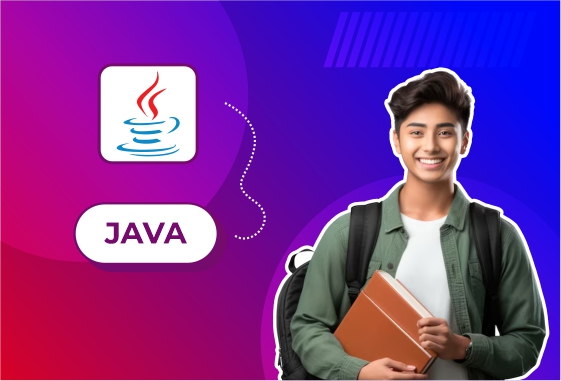
Responsive Restaurant Website
A Responsive Restaurant Website developed with Java typically involves using Java for the back-end to handle the server-side logic, while the front-end is made responsive using HTML, CSS, and JavaScript. The website allows customers to explore the restaurant's menu, make reservations, view special offers, and contact the restaurant. The website adjusts its layout based on the device (desktop, tablet, or mobile) to provide a smooth user experience across all screen sizes.
In this project, Java would typically be used for the server-side component (e.g., using Spring Boot or Servlets), while the front-end would be built using responsive web design principles to ensure the site works well on mobile devices, tablets, and desktops.
Explanation:
The Responsive Restaurant Website aims to create a seamless online experience for customers by allowing them to interact with the restaurant’s offerings via a website that adjusts itself to different screen sizes. The project focuses on responsiveness and user experience, making sure the website looks and functions well on a variety of devices.
Key Features:
Responsive Design:
The website adjusts its layout automatically to fit different screen sizes, from desktops to tablets and mobile phones. This is achieved through CSS media queries, flexbox, and grid layout.
The website's elements, such as navigation bars, images, and menu sections, adjust to different screen sizes, ensuring a consistent user experience across devices.
Restaurant Menu:
Display the restaurant’s menu in a visually appealing and user-friendly format.
Menu items may include pictures, descriptions, and prices. Users can filter or sort the menu by categories (e.g., starters, main courses, desserts).
Online Reservation System:
Users can check table availability and make reservations directly from the website.
The reservation system may allow users to select the date, time, and the number of guests for their reservation.
An email or confirmation message can be sent after a successful reservation.
Contact and Location:
A contact form where users can inquire about bookings, events, or menu details.
Integration with Google Maps API to display the restaurant’s location.
Special Offers & Promotions:
A section displaying special offers, discounts, or promotional events. This could be updated dynamically via the back-end in Java.
Customer Feedback:
Users can leave feedback, reviews, or ratings after dining at the restaurant.
Admin Panel (Back-End):
Admins can log in to a back-end system built with Java (e.g., using Spring Boot or Java Servlets) to manage menu items, reservation requests, customer feedback, and promotional offers.
Search Functionality:
The website may include a search feature for finding dishes by name, ingredients, or dietary preferences.
Technologies Used:
Front-End:
HTML5: To structure the content of the website (e.g., navigation, menu items, footer).
CSS3: For styling the website and implementing responsive design using features like media queries, flexbox, and CSS grid.
JavaScript: For handling dynamic content, such as updating menu items, managing reservation forms, and providing interactive features.
Bootstrap (Optional): A front-end framework to simplify building a responsive design.
Back-End:
Java (Spring Boot or Servlets): Java is used for the back-end logic, such as handling reservations, sending confirmation emails, and dynamically serving the menu.
Spring Boot: A popular Java framework for building RESTful APIs and handling web requests. It can be used to manage the website's server-side functionalities, such as processing reservation requests, updating the menu, or storing customer feedback.
JSP (JavaServer Pages) or Thymeleaf: Used to generate dynamic web pages from the back-end in a Java environment.
Database (MySQL, PostgreSQL): A relational database to store customer reservation details, feedback, and menu items.
Optional Tools and Libraries:
Google Maps API: To show the restaurant’s location on the website.
Email API (e.g., SendGrid or JavaMail API): To send reservation confirmation emails to users.
jQuery: For DOM manipulation (optional in modern projects).
Apache Tomcat: A web server to host the website.
Basic Structure of the Project:
1. Front-End Structure (HTML, CSS, JavaScript):
Home Page:
The home page introduces the restaurant, including images, contact information, and a brief description.
It includes a navigation bar that links to sections such as the menu, reservations, and special offers.
Menu Page:
A grid or list displaying the restaurant's menu, including categories, descriptions, images, and prices.
The page is responsive and adjusts based on screen size (e.g., the grid layout adjusts to columns on mobile).
Reservation Page:
A form where users can input the date, time, and number of guests for a reservation.
The form interacts with the Java back-end to check availability and store the reservation data.
Special Offers Page:
A section dedicated to displaying ongoing promotions, discounts, or events. This can be dynamically managed from the back-end.
Contact Page:
A contact form for inquiries or reservations.
Includes restaurant address with a map and phone number.
Footer:
Includes important information like social media links, location, hours of operation, and privacy policy.
2. Back-End (Java):
Spring Boot Application:
Controller: Handles incoming requests, such as displaying the menu, accepting reservations, and serving special offers.
Service Layer: Contains business logic, such as checking if a table is available for reservation and storing customer feedback.
Repository: Interfaces with the database to store and retrieve data like menu items, reservation details, and customer reviews.
Conclusion:
A Responsive Restaurant Website built with Java focuses on providing an excellent user experience across all devices. The front-end uses HTML, CSS, and JavaScript for responsiveness, while the back-end uses Java (with frameworks like Spring Boot) to handle dynamic content such as reservations and menu updates. This website ensures that customers can easily navigate, book reservations, and learn about the restaurant on any device. The use of responsive design techniques ensures the website adapts to various screen sizes, providing a smooth experience on mobile phones, tablets, and desktops.





